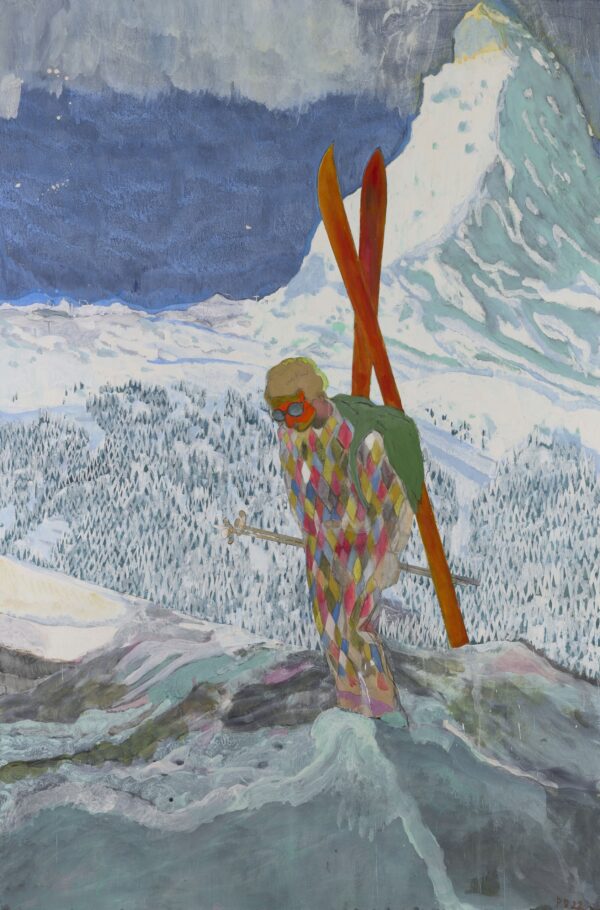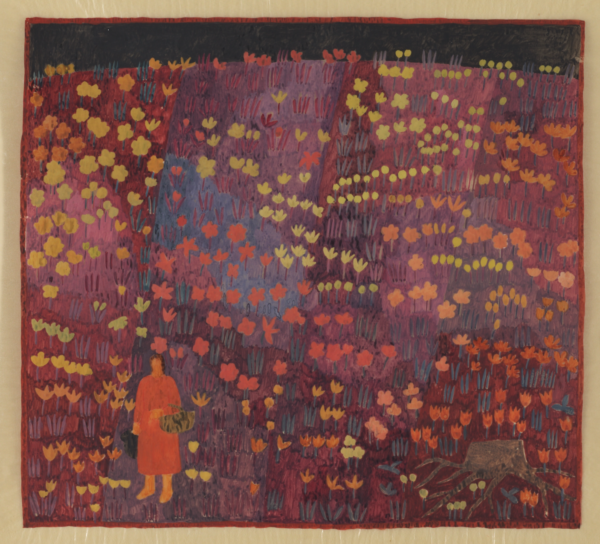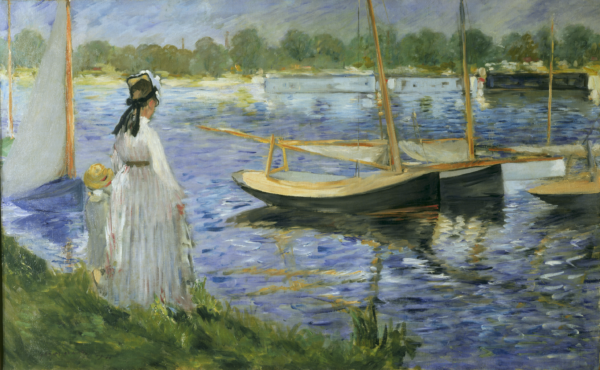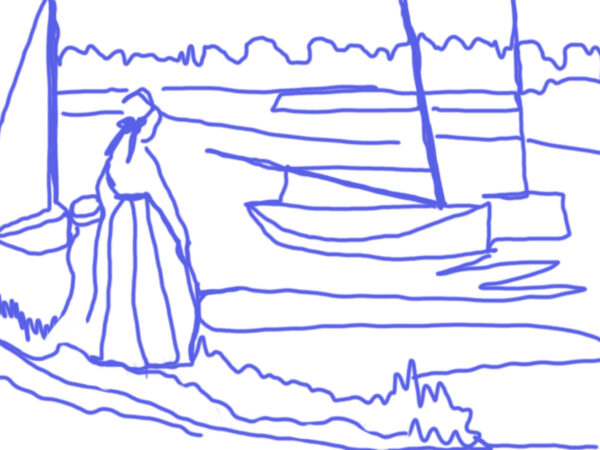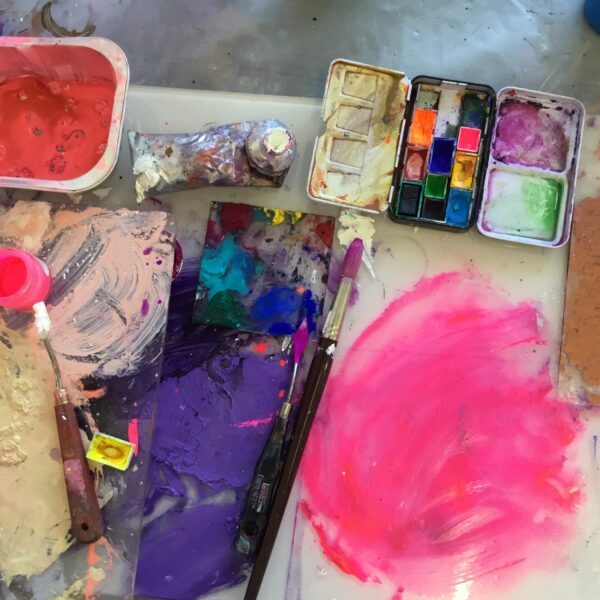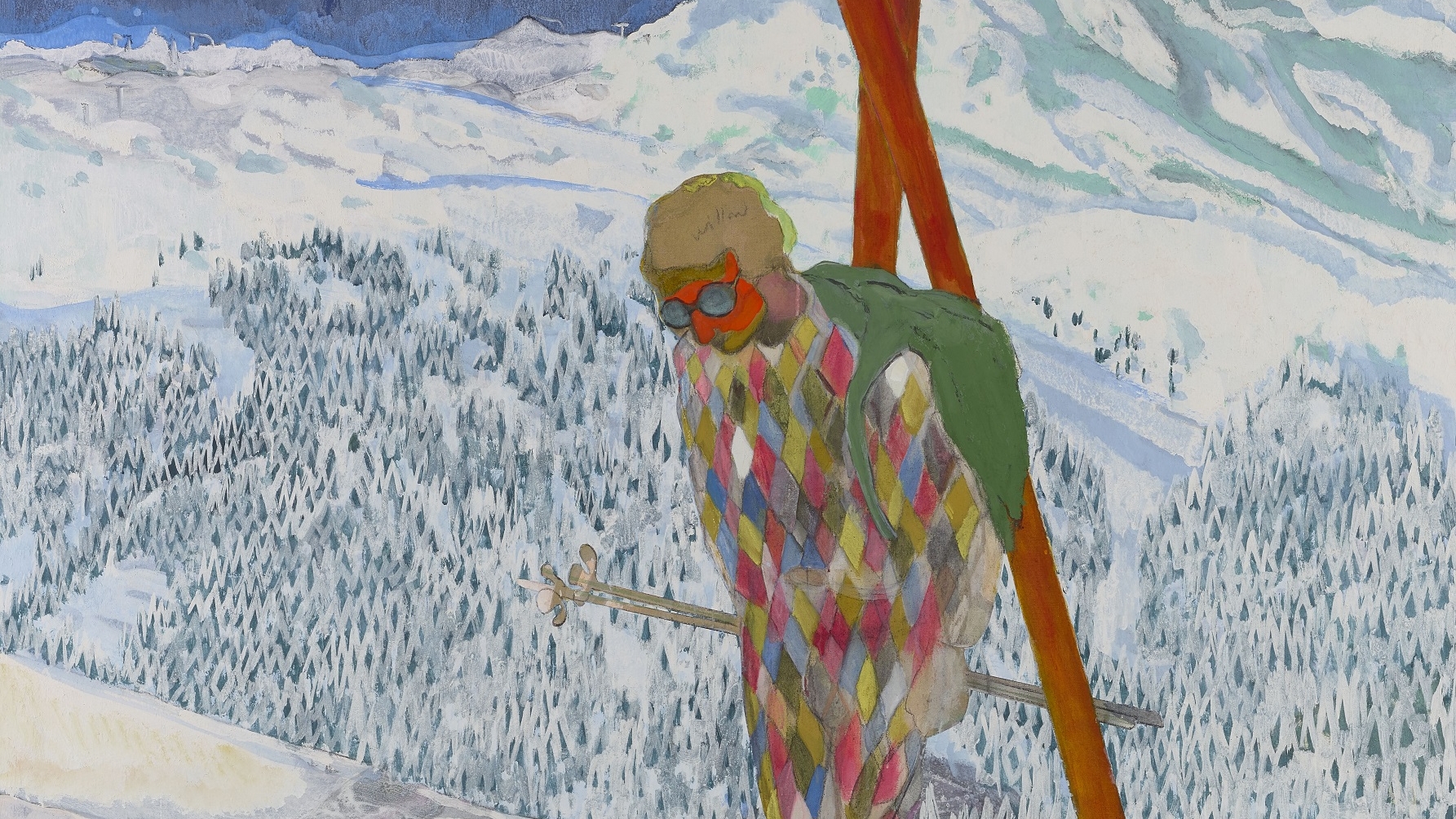
FOCUS: Connecting People with Landscape
Devised by Courtauld Educator Nadine Mahoney.
Download the PDF: Connecting People with Landscape
Introduction
People and places is a common theme in many of the paintings in the collection of The Courtauld Gallery, from the mother and child in Manet’s Banks of the Seine at Argenteuil, painted in 1874, to Ferenczy’s Design for a Tapestry in the 1930s. Inspired by the collection and The Morgan Stanley Exhibition: Peter Doig this learning resource explores ways that people and place are connected through both real and imagined places. Doig’s experience of living in Canada and Trinidad, and more recently London in particular, has informed his sense of place.
These quotations written by artists can help us start to see through their eyes
Water is mysterious, you only see what is on the surface.Peter Doig
When you take a flower in your hand and really look at it, it’s your world for the moment.Georgia O’Keeffe
The landscape with its violent, pure colours dazzled and blinded me.Paul Gauguin
Through my earth/body sculptures I become one with the earth I become an extension of nature and nature becomes an extension of my body.Ana Mendieta
Warm up activity: Contemplating landscape
Find a room with a number of landscape paintings.
- Select a landscape that has a figure.
- Write down seven adjectives to describe it (no nouns allowed).
- Write the title and artist on the back.
- Hand your notes to your partner but don’t let them see the title or artist.
- Your partner has to guess which landscape you have described. When your partner has found the landscape ask them what they think the figure is doing and feeling. Do you agree? Discuss.
Activity 1: Looking with your pencil
- Look really closely at the composition of your landscape (how the objects are laid out in the painting).
- Can you see how each part of the painting is connected to the other.
What can you see in the painting, (ie flowers, people, water) do they touch, do they reach the edges of the
canvas or sit in the middle? - On a sheet of plain paper and using a coloured pencil draw one continuous line (without lifting the pencil off the paper) to describe the composition.
- Take a minute to plan the route your pencil will take around the paper before you start.
Activity 2: Dreamlike landscapes
This activity builds upon the warm-up activities to show how you can be inspired by an artwork to develop a new creative outcome. For centuries art and poetry have inspired one another. The artist Peter Doig has created artworks inspired by the writing of poet Derek Walcott and in 2016 Walcott wrote a suite of poems each inspired by one of Doig’s paintings and published as Morning, Paramin.
- Look closely at a landscape with a figure.
- Write down 15 words you can think of to describe the painting so you have plenty of options.
- Tear up the words and use them to create a haiku. Traditionally this has three lines. The first line has five syllables, the second line has seven syllables and the third line has five syllables.
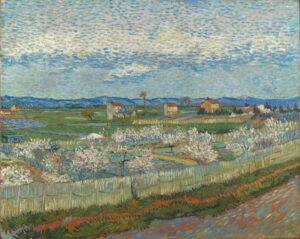
Artwork: Peach Trees in Blossom, 1889 by Vincent van Gogh.
15 words: Open / flat / cloudy / cool
/ sky / trees / mountains / tranquil /
lonely / farmer / blue / tints / lost /
path / harmonious
Haiku: Mountain tranquil sky
Farmer peaches pathway blue
Open bumpy flat
In the classroom
If you cannot visit the gallery the activities can be done via our virtual gallery links:
Activity: Remembering place
Peter Doig builds on personal experience and imagery from multiple sources to create his artworks.
For this activity you will need to gather a selection of photocopies or print outs of found images of places and another selection with figures in. In addition to standard classroom materials you will also need carbon paper which is available from most stationers and school suppliers.
- Choose an image that reminds you of a place you have been to or that you would like to visit.
- Working in pairs talk to your partner about the place. Where is it? Do you go there regularly? What do you like most about this place? How does it make you feel? What sounds can you hear there? If you have chosen somewhere you would like to go you will have to use your imagination.
- Lay the carbon paper between your image and sheet of paper. Trace over the image using a sharp pencil. You might need to test which side up the carbon paper needs to be.
- Lift up your print out and carbon paper to see the image below. You may notice parts missing, this is part of what makes your drawing unique.
- Select a figure from the print outs to add into your landscape using the carbon paper again.
- Paint your picture, think about how you want the picture to feel when selecting colours, e.g. calm with harmonious colours or vibrant with complementary colours.
Further conversation ideas / activities
- As an extension of the previous activity, write a diary entry for that day.
- Put a selection of your haiku words into an AI art generator to explore results, or image search the words separately to create images you can cut up for a collage.
- Use the artworks made in the above activities to inspire a piece of art in a different medium, for example sculpture / photography / performance art / fashion.
